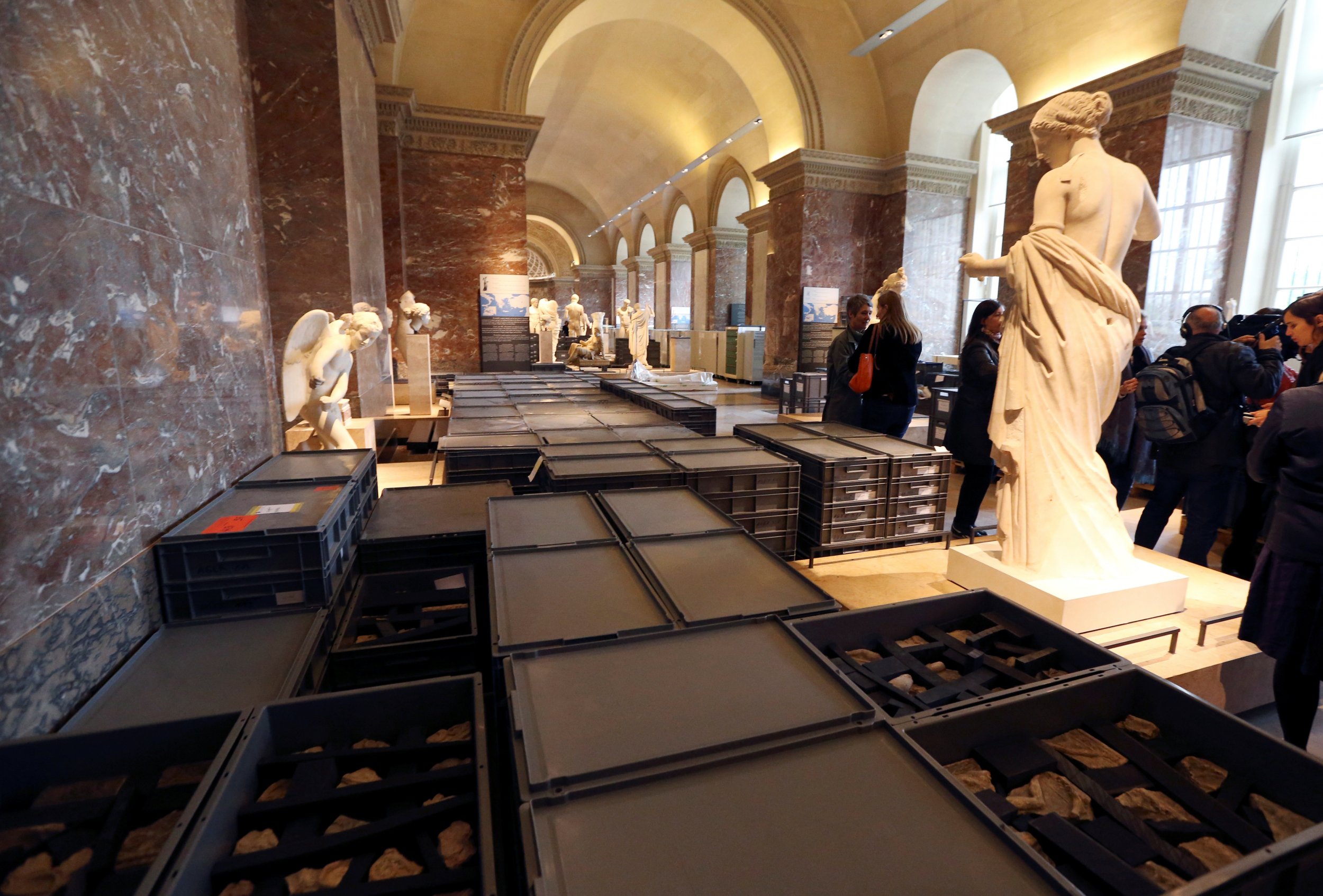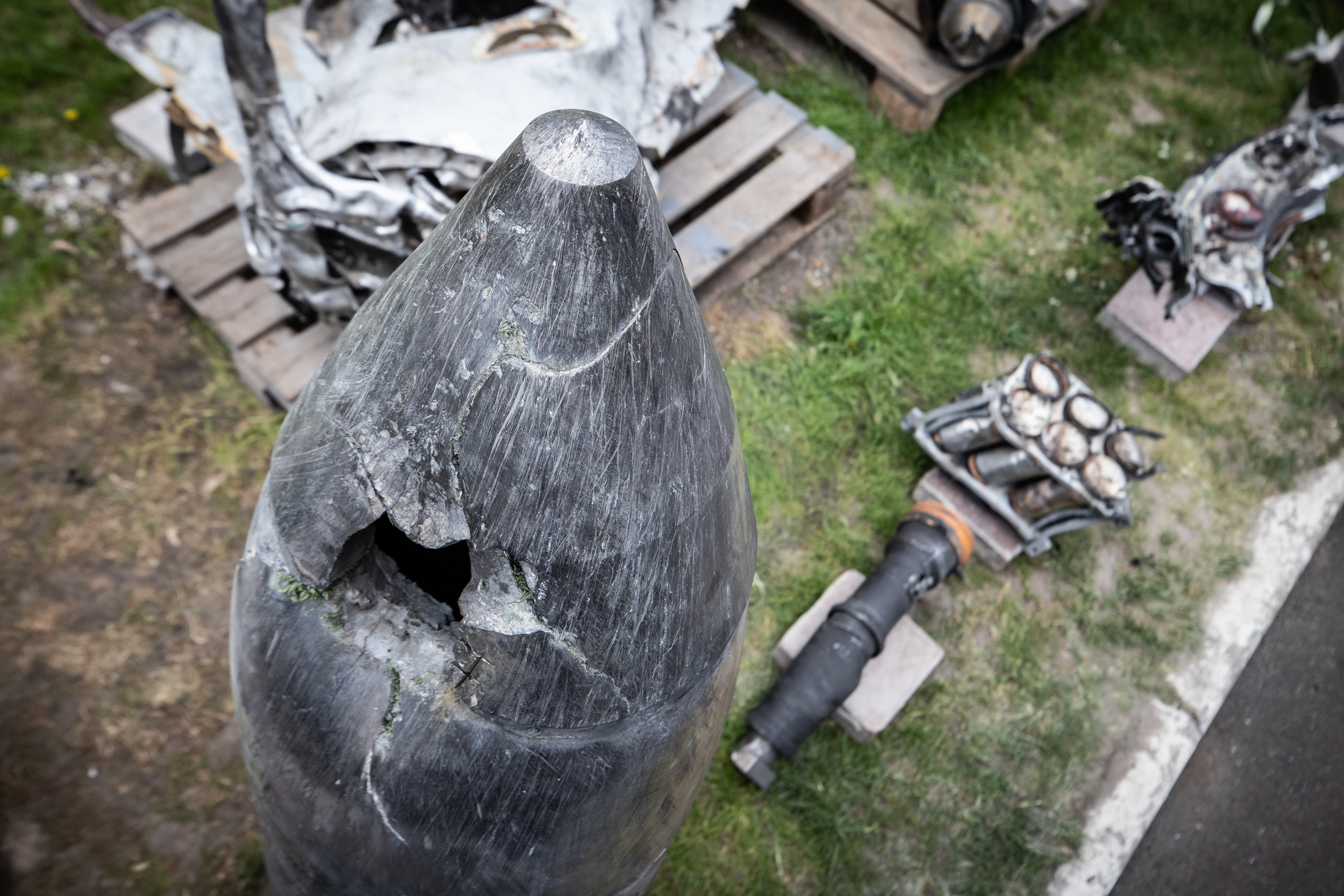
The home to the Mona Lisa, the Louvre Museum in Paris, said to be the most visited museum in the world, will reopen Wednesday after shutting its doors and moving artwork because of historic flooding in the city.
As the Seine River rose in the French capital on June 2, the museum said it would close to visitors and implement its flood protection plan. French President François Hollande and Culture Minister Audrey Azoulay visited the Louvre the following night and met with teams that were transporting artwork and materials to higher ground. About 150,000 works in storage and 7,000 gallery pieces were at risk.
The institution's department of Islamic art, which is situated in the flood zone, "will remain closed a little longer," the museum said Tuesday on Twitter.
In a statement, the Louvre said its flood protection plan has been in place since 2002. The plan involves a team dedicated to risk management, daily observation of the level of the Seine, creation of an inventory of works at risk of flood damage, training exercises, installation of water pumps and continued development of an off-site storage facility in Liévin, two and a half hours north of Paris.
A New York Times reporter who toured the Louvre on Friday wrote that near the iconic Aphrodite statue, known as the "Venus de Milo," "storage boxes were piled atop one another. Boxes completely encircled some sculptures."
"I think they did" act appropriately, says Steve Keller, a museum security consultant who has worked with the National Gallery, London, the National Gallery of Canada and the Smithsonian Institution, but not the Louvre. Still, he says, "any time you have to move [pieces], they're at risk."
Keller says he advises new museums to build in ways that protect against potential flooding, but museums are often unwilling to plan accordingly. "People will say to me, 'Oh, it's in the 100-year floodplain, we don't have to worry about that,'" he says. "The 100 years could be tomorrow. It amazes me how sometimes people are willing to take a chance and play the odds." He says he advises museums already in existence "to have whatever they need on hand, don't wait to do it the last minute" to deal with floods.
"We recommend that on a daily basis that you have a response team available, that you're keeping your eyes open for changing conditions," says Steve Layne, a security and emergency management consultant who has worked with more than 500 museums and institutions. He says he has not worked with the Louvre, but that it likely closed more out of concern for its visitors than for its artwork and artifacts. "The No. 1 priority is life safety, followed by the safety of the collection."
Crue de la Seine: le président @fhollande s'est rendu dans la nuit au @MuseeLouvre encourager les équipes mobilisées pic.twitter.com/DhP56jpD2W
— Élysée (@Elysee) June 4, 2016
More than 9 million people visited the Louvre in 2014, according to the museum's most recent annual report, which the French government has said makes it the most visited museum in the world. As of 2014, the museum had 446,673 works in its inventory.
The Louvre is situated on the bank of the Seine. "Because of its location, the Louvre Museum is in danger. We're completely surrounded by water," Sophie Lemonnier, head of the architecture, museography and technical department at the museum, told the United Nations Office for Disaster Risk Reduction late last year, as Wired reportedlast week.
Louvre museum will open again June 8 at 9 am.
— Musée du Louvre (@MuseeLouvre) June 7, 2016
Department of Islamic Art will remain closed a little longer. pic.twitter.com/F8YoQbFnOG
Lemmonier has said the museum is working to reduce its vulnerability to flooding. Five hundred museum staffers are part of the flood-prevention strategy. Much of the facility is underground, including its main entrance hall and Islamic art gallery, and 70 percent of storage spaces are in flood-risk zones.
"Not everyone understands that when you have flooding, water goes down. And that's where everyone keeps their collections," says Layne, the consultant. "Almost every museum that I'm aware of stores their collections in their basement or on their lower floors."
Retour progressif à la normale. Merci aux équipes du @MuseeLouvre ! Réouverture mercredi :) pic.twitter.com/mRLyhVE5KO
— kientz guillaume (@guillaumekdd) June 6, 2016
The Musée d'Orsay in Paris also closed because of the flooding and had to secure 7,000 works. Sections of that museum will also reopen on Wednesday, the French government said in a statement.
Those museums—along with the rest of Paris—were no doubt amid preparations for what is typically the city's busiest tourism season. But the number of visitors had reportedly declined in recent months, following the November attacks there, though travel agents have said they are starting to see a rebound.
Museums in nearby Brussels have faced problems attracting visitors following the Paris attacks and the bombings at an airport and metro station in Brussels in March.
"It's really bad. They were recovering after what happened in November, and now they're again confronted" with declines, Pieter Van der Gheynst of the Brussels Museums Council, which represents some 100 institutions, told Newsweek in April. "I think a lot of people are afraid about the future."
Le déménagement des oeuvres se poursuit. Merci aux équipes pour tt ce travail & à vous pour vos soutiens #CrueParis pic.twitter.com/JLJ45YpWu7
— Musée d'Orsay (@MuseeOrsay) June 3, 2016
The flooding also comes days before Paris is to host the Union of European Football Associations (UEFA) Euro 2016 championship. A pre-tournament concert is scheduled for Thursday, and the opening match and ceremony are scheduled for Friday.
Citing numbers from the French government, The New York Times reported that the water level of the Seine rose to nearly 20 feet on June 3 from less than 5 feet on May 29.
The government has said the flooding in the Paris region is the worst since 1982, and in other areas of France the Seine surpassed a 1910 record. Heavy rainfall in late May caused the flooding, which has also hit other parts of Europe, including Germany. At least a dozen people have reportedly died.
The Girodet Museum in Montargis, an hour and a half south of Paris, was hit hard by the flooding. The museum was closed for renovations at the time, but according to supporters who are now collecting funds to help it recover, paintings, sculptures, drawings and other pieces were damaged. The supporters are seeking $34,000.
Uncommon Knowledge
Newsweek is committed to challenging conventional wisdom and finding connections in the search for common ground.
Newsweek is committed to challenging conventional wisdom and finding connections in the search for common ground.
About the writer
Max Kutner is a senior writer at Newsweek, where he covers politics and general interest news. He specializes in stories ... Read more
To read how Newsweek uses AI as a newsroom tool, Click here.








